
An olio is a vaudeville number, a short dance or song, or a set of same, performed as an encore after the performance of a dramatic play. The term can also refer to a set of such performances, or to the curtain used during the set.

An olio is a vaudeville number, a short dance or song, or a set of same, performed as an encore after the performance of a dramatic play. The term can also refer to a set of such performances, or to the curtain used during the set.
The term "olio" is believed to derive either from the Spanish olla, originally meaning a clay pot but later used to describe its mix of contents, or from the oilcloth curtains used during the acts. [1]
Olio performances consisted of artistic or literary works or musical pieces, used between acts in a burlesque or minstrel show, similar to the modern variety show. These sometimes included performances by acrobats or magicians. [2] Olios in minstrel shows often contained a parodic stump speech, mocking the oratory of white politicians. [3]
In addition to being widely crowd-pleasing, the olio gave the stage crew time to change sets, as the back of the stage would be hidden behind a dropped curtain. Some burlesque houses would display advertisements on these curtains, similar to a billboard. [1]
Due to their popularity, by the 1860s the olio became the largest component of minstrel shows. [4] The olio was also common on showboats in the 19th and early 20th centuries.
The following outline provides an overview of and topical guide to entertainment and the entertainment industry:
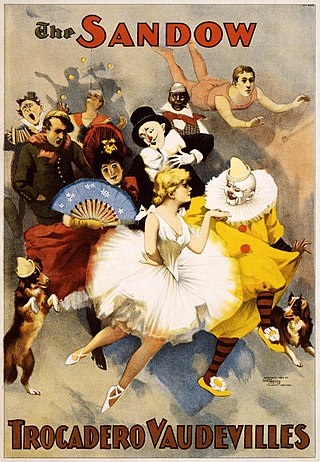
Vaudeville is a theatrical genre of variety entertainment which began in France at the end of the 19th century. A vaudeville was originally a comedy without psychological or moral intentions, based on a comical situation: a dramatic composition or light poetry, interspersed with songs or ballets. It became popular in the United States and Canada from the early 1880s until the early 1930s, while changing over time.

A comedian or comic is a person who seeks to entertain an audience by making them laugh. This might be through jokes or amusing situations, or acting foolish, or employing prop comedy. A comedian who addresses an audience directly is called a stand-up comedian.
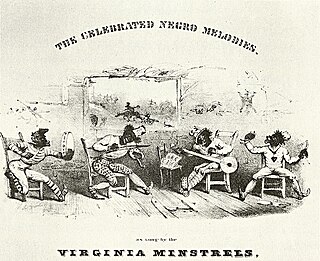
The minstrel show, also called minstrelsy, was an American form of theater developed in the early 19th century. The shows were performed by mostly white actors wearing blackface makeup for the purpose of comically portraying racial stereotypes of African Americans. There were also some African-American performers and black-only minstrel groups that formed and toured. Minstrel shows stereotyped blacks as dimwitted, lazy, buffoonish, cowardly, superstitious, and happy-go-lucky. Each show consisted of comic skits, variety acts, dancing, and music performances that depicted people specifically of African descent.

A burlesque is a literary, dramatic or musical work intended to cause laughter by caricaturing the manner or spirit of serious works, or by ludicrous treatment of their subjects. The word derives from the Italian burlesco, which, in turn, is derived from the Italian burla – a joke, ridicule or mockery.

Julian Eltinge, born William Julian Dalton, was an American stage and film actor and female impersonator. After appearing in the Boston Cadets Revue at the age of ten in feminine garb, Eltinge garnered notice from other producers and made his first appearance on Broadway in 1904. As his star began to rise, he appeared in vaudeville and toured Europe and the United States, even giving a command performance before King Edward VII. Eltinge appeared in a series of musical comedies written specifically for his talents starting in 1910 with The Fascinating Widow, returning to vaudeville in 1918. His popularity soon earned him the moniker "Mr. Lillian Russell" for the popular beauty and musical comedy star.

A revue is a type of multi-act popular theatrical entertainment that combines music, dance, and sketches. The revue has its roots in 19th century popular entertainment and melodrama but grew into a substantial cultural presence of its own during its golden years from 1916 to 1932. Though most famous for their visual spectacle, revues frequently satirized contemporary figures, news or literature. Similar to the related subforms of operetta and musical theatre, the revue art form brings together music, dance and sketches to create a compelling show. In contrast to these, however, revue does not have an overarching storyline. Rather, a general theme serves as the motto for a loosely related series of acts that alternate between solo performances and dance ensembles.
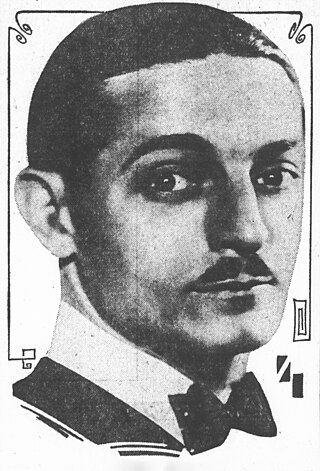
Lester M. Allen was an American actor, dancer, singer, comedian, and circus performer. After beginning his career as a child acrobat with the Barnum and Bailey Circus, he became a performer in minstrel shows, burlesque, and vaudeville. He worked as primarily a dancer and acrobat in the Broadway musical revues George White's Scandals and Ziegfeld Follies in the 1910s and early 1920s; ultimately progressing to singing and comedic acting parts. He starred as a comic actor in several musical comedies on Broadway during the 1920s and the early 1930s. He transitioned into work as a film actor, appearing in more than 15 films released from 1941 to 1950. He was killed after being struck by a motor vehicle in 1949.

Theater drapes and stage curtains are large pieces of cloth that are designed to mask backstage areas of a theater from spectators. They are designed for a variety of specific purposes, moving in different ways and constructed from various fabrics. Many are made from black or other darkly colored, light-absorbing material. Theater drapes represent a portion of any production's soft goods, a category comprising any non-wardrobe, cloth-based element of the stage or scenery. Theater curtains are often pocketed at the bottom to hold weighty chain or to accept pipes to remove their fullness and stretch them tight.

Miller Symphony Hall is a 1,100-seat performing arts facility in Allentown, Pennsylvania that hosts the Allentown Symphony Orchestra. The hall was previously known as Central Market (1896), Lyric Theater (1899), and Allentown Symphony Hall (1959). In 2012, it was renamed for the Miller family, longtime owners of the hall and of The Morning Call newspaper.

A front curtain, also known as a (front-of-)house curtain, act curtain, grand drape, main curtain or drape, proscenium curtain, or main rag is the stage curtain or curtains at the very front of a theatrical stage, separating it from the house.
Vaudeville in the Philippines, more commonly referred to as bodabil, was a popular genre of entertainment in the Philippines from the 1910s until the mid-1960s. For decades, it competed with film, radio and television as the dominant form of Filipino mass entertainment. It peaked in popularity during the Japanese occupation in the Philippines from 1941 to 1945. Many of the leading figures of Philippine film in the 20th century, such as Dolphy, Nora Aunor, Leopoldo Salcedo and Rogelio de la Rosa, began their showbusiness careers in bodabil.
A tab show was a short, or tabloid version, of various popular musical comedies performed in the United States in the early 20th century.

American burlesque is a genre of variety show derived from elements of Victorian burlesque, music hall, and minstrel shows. Burlesque became popular in the United States in the late 1860s and slowly evolved to feature ribald comedy and female nudity. By the late 1920s, the striptease element overshadowed the comedy and subjected burlesque to extensive local legislation. Burlesque gradually lost its popularity, beginning in the 1940s. A number of producers sought to capitalize on nostalgia for the entertainment by recreating burlesque on the stage and in Hollywood films from the 1930s to the 1960s. There has been a resurgence of interest in this format since the 1990s.
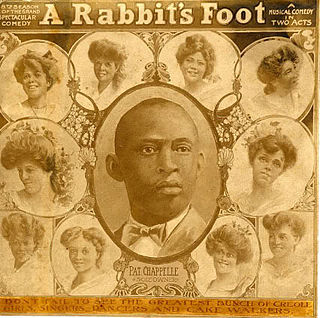
Black Vaudeville is a term that specifically describes Vaudeville-era African American entertainers and the milieus of dance, music, and theatrical performances they created. Spanning the years between the 1880s and early 1930s, these acts not only brought elements and influences unique to American black culture directly to African Americans but ultimately spread them beyond to both white American society and Europe.
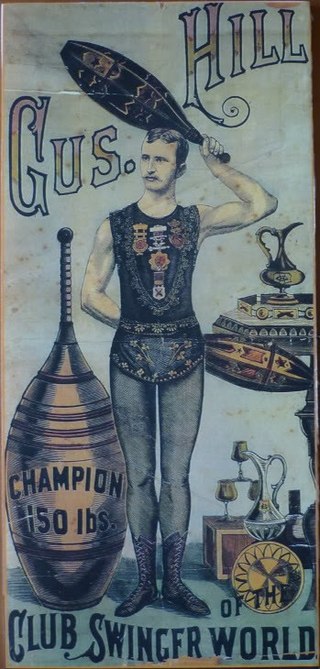
Gus Hill was an American vaudeville performer who juggled Indian clubs. He later became a burlesque and vaudeville entrepreneur. Hill was one of the founders of the Columbia Amusement Company, an association of burlesque shows and theaters, and became president of the American Burlesque Association. He also staged drama and musical comedies. He launched a highly popular series of "cartoon theatricals", musical comedies based on comic strips or cartoons. At one time he was running fourteen different shows.
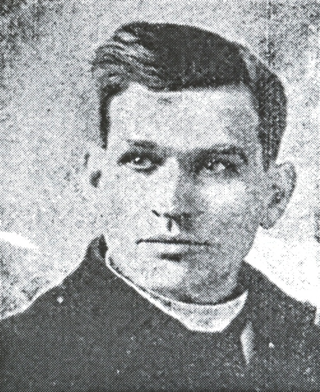
Sam T. Jack, a burlesque impresario, was a pioneer of the African-American vaudeville industry in the US with his Creole Burlesque Show. He was also known for staging increasingly risqué shows in Chicago, where young women appeared wearing only skin-colored tights.

Eccentric dance is a style of dance performance in which the moves are unconventional and individualistic. It developed as a genre in the United States in the late 19th and early 20th centuries as a result of the influence of African and exotic dancers on the traditional styles of clog and tap dancing. Instead of holding the body stiff and straight in the style of a jig, acrobatics such as flips and contortions were used in a more exuberant, expressive and idiosyncratic way.
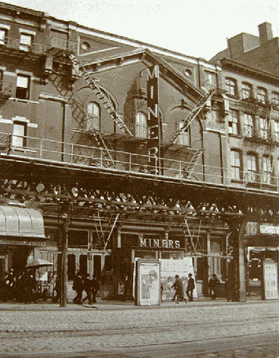
Miner's Bowery Theatre was a vaudeville or variety show theater opened in the Bowery of New York by Senator Henry Clay Miner in 1878.
Modern stand-up comedy began around the turn of the century, evolving from a variety of sources including minstrel shows and vaudeville. Early stand-up comedians spoke directly to the audience as themselves without props or costumes, which distinguished these acts from vaudeville performances. These comics stood in front of the curtain during their shows, like early 20th century "front cloth" stand-up comics in Britain and Ireland whose numbers allowed the stage behind them to be re-set for another act.